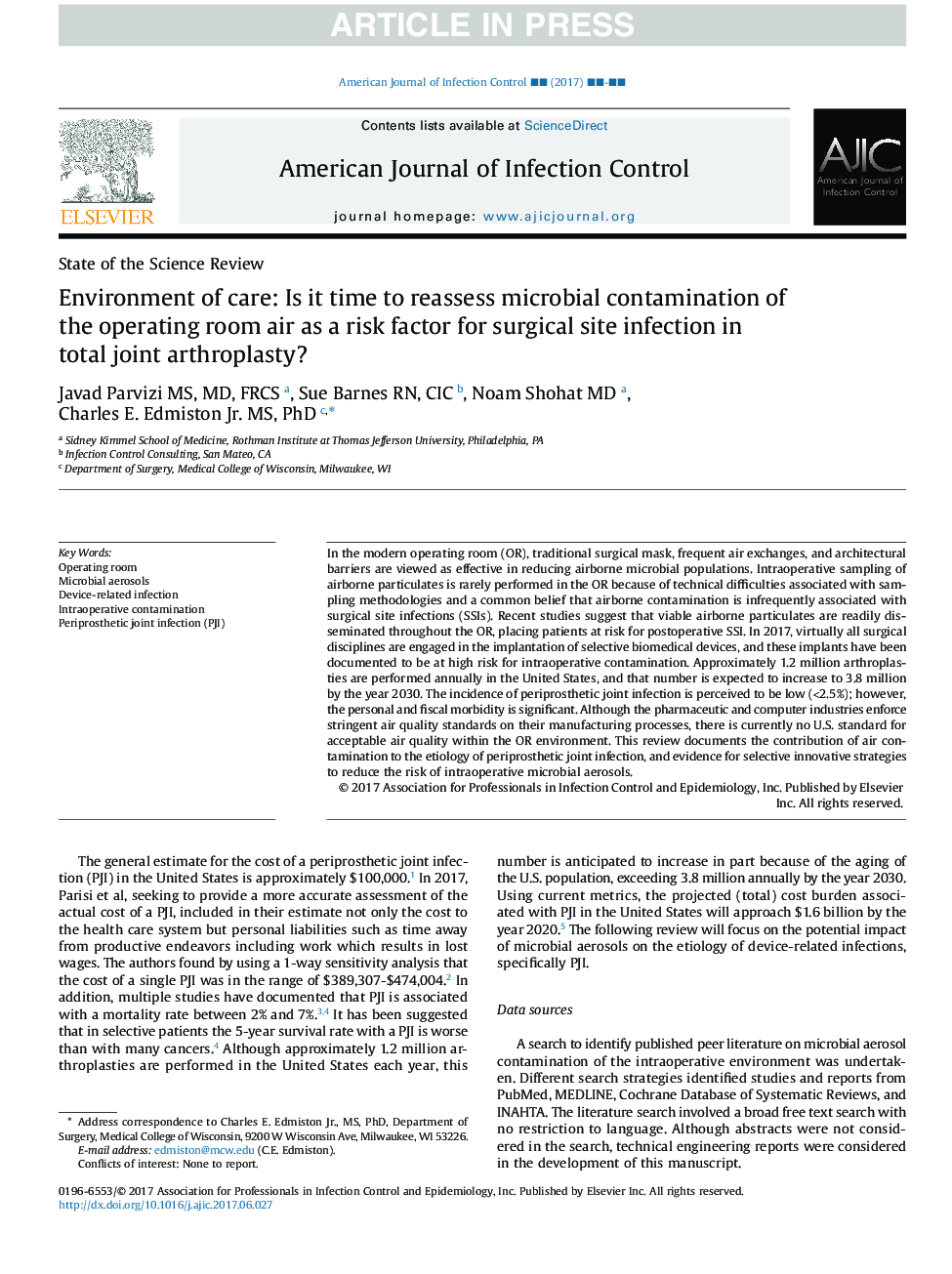| Article ID | Journal | Published Year | Pages | File Type |
|---|---|---|---|---|
| 8567207 | American Journal of Infection Control | 2017 | 6 Pages |
Abstract
In the modern operating room (OR), traditional surgical mask, frequent air exchanges, and architectural barriers are viewed as effective in reducing airborne microbial populations. Intraoperative sampling of airborne particulates is rarely performed in the OR because of technical difficulties associated with sampling methodologies and a common belief that airborne contamination is infrequently associated with surgical site infections (SSIs). Recent studies suggest that viable airborne particulates are readily disseminated throughout the OR, placing patients at risk for postoperative SSI. In 2017, virtually all surgical disciplines are engaged in the implantation of selective biomedical devices, and these implants have been documented to be at high risk for intraoperative contamination. Approximately 1.2 million arthroplasties are performed annually in the United States, and that number is expected to increase to 3.8 million by the year 2030. The incidence of periprosthetic joint infection is perceived to be low (<2.5%); however, the personal and fiscal morbidity is significant. Although the pharmaceutic and computer industries enforce stringent air quality standards on their manufacturing processes, there is currently no U.S. standard for acceptable air quality within the OR environment. This review documents the contribution of air contamination to the etiology of periprosthetic joint infection, and evidence for selective innovative strategies to reduce the risk of intraoperative microbial aerosols.
Keywords
Related Topics
Life Sciences
Immunology and Microbiology
Microbiology
Authors
Javad MS, MD, FRCS, Sue RN, CIC, Noam MD, Charles E. MS, PhD,
